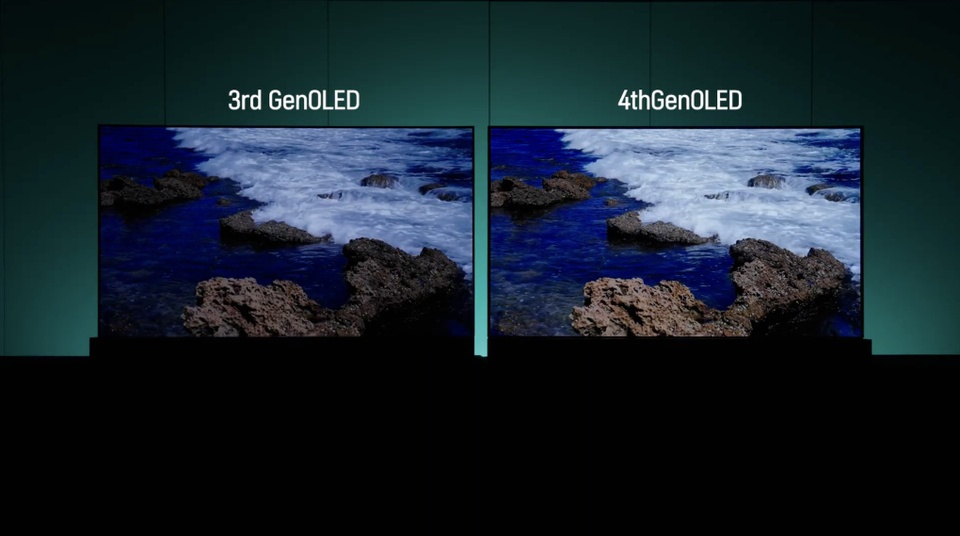 |
Comparison of LG's 3rd and 4th generation OLED panels. Photo: LG Display . |
LG didn't have a big show like every year at CES 2024. This led to a rather strange situation when it was Panasonic that revealed the most information about LG Display's newest and most advanced OLED panel.
It wasn't until January 16 that the Korean brand revealed full details about its fourth-generation OLED panel. "33% brighter than the previous generation and optimized for the AI TV era, this is the industry's first OLED display to reach a peak brightness of up to 4,000 nits," LG announced in a press release.
According to LG Display, the breakthrough of this panel lies in the Primary RGB Tandem structure, a proprietary technology that uses independent RGB layers to create light. Previously, LG Display used a 3-layer structure with two blue layers emitting shorter wavelengths along with red, green and yellow layers combined into a single layer.
Meanwhile, with the Primary RGB Tandem structure in the 4th generation OLED TV panel, the light source is organized into 4 layers by adding two additional blue layers and separate red and green layers. This enhances the maximum brightness by generating more light in each layer than the old structure.
In addition to brightness, the energy efficiency of the 4th generation OLED panel has also been improved. LG Display says the color brightness reaches 2,100 nits, 40% higher than the previous version.
While these numbers represent the panel's maximum capabilities, it's unlikely that TV manufacturers like Panasonic will fully utilize them in commercial products.
In the race for OLED TV panels, Samsung Display is not outdone when it announced the brightest QD-OLED panel ever equipped on the Samsung S95F TV model just launched in Las Vegas.
Accordingly, Samsung focuses on optimal anti-glare screen technology, while LG still retains the traditional glossy coating but uses ultra-low reflection technology to minimize image noise.


































































































Comment (0)